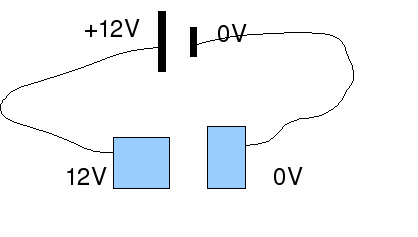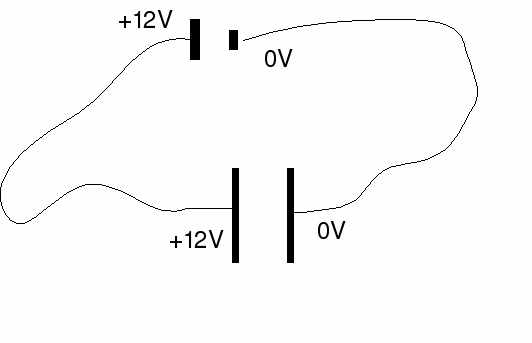Suppose we take a battery and connect one terminal to a piece of metal. Charge will pass from the terminal to the metal until the metal is charged to the potential of the terminal. If we connect the other terminal to another piece of metal then that terminal will be charged to the potential of that other terminal. No charge can pass from on piece of metal to another if the two pieces are not connected in some way. The situation is illustrated below.

Obviously if the voltage of the cell increases the potential difference between the two pieces of metal will also increase. In fact up to certain limits the charge on the pieces of metal is proportional to the voltage across it. The constant of proportionality is called the capacitance, written![]()
The name for a device which stores charge in this way is capacitor The symbol is shown below.

The field between the plate reflects the force on a positive charge and is shown from left to right.
